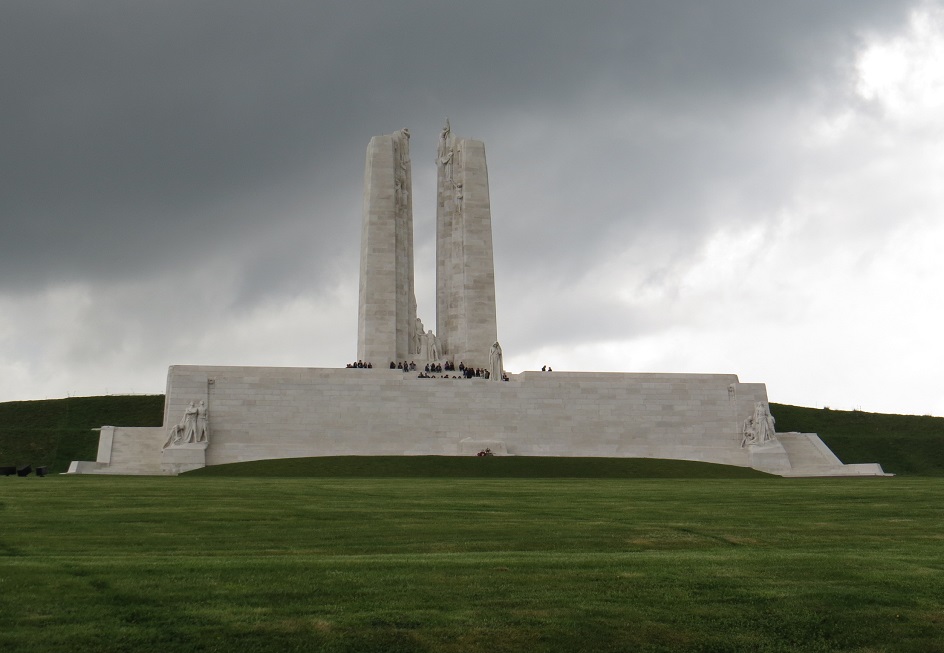Home of CEFRG
Honouring the CEF
Welcome to the home of CEFRG, the Canadian Expeditionary Force Research Group dedicated to honouring the CEF, men and women serving with the Canadian Expeditionary Force. The Canadian National Vimy Memorial, honouring the CEF, perhaps the most magnificent tribute to Canadians ever. Some would argue The St. Julien Memorial, also known as the Brooding Soldier Monument, honouring those who fell in Belgium, a more fitting tribute.

CEFRG collects objects and stories that give an insight into experiences of the Great War. CEFRG preserves these tales for future generations, and brings them to today’s audience in the most powerful way possible.
Expertise
The home of CEFRG is just the beginning. What distinguishes CEFRG is the expertise in transcription of service records and unit war diaries. Moreover, appreciation and knowledge of these records unlocks the stories of Canada’s rich military heritage, and your family. Furthermore, these stories often originate from visits to Commonwealth War Graves Commission and Volksbund Cemeteries.
Learn More
Finally, CEFRG exists to respond to requests regarding units, battles, and most importantly, service records of the CEF. Do you want to know what your grandfather did in the Great War? Have you perhaps ‘adopted’ a soldier of your own? Help CEFRG to discover our shared military heritage by submitting your request. Learn more about our motivation on our About page.
Colorization
CEFRG does not publish, condone, nor appreciate, colorized images of the Great War. In fact, CEFRG is vehemently opposed to this process. There are several negative connotations of colorization, and the trivial issues are insubstantial in regards to CEFRG’s policy on colorization. Colorization is not harmless, in fact, it is very dangerous.
Process
First, there are trivial issues with the colorization process, such as the choice of color being arbitrary. This is particularly problematic for identification of unit’s by shoulder patches in the C.E.F. Each of the four divisions had a unique symbol for battalions in their infantry brigades. The image below from the Albert Khan collection, an Autochrome photo – not colourized.

Castelnau, Paul Date de prise de vue 03/09/1917. Dunkerque-Nord-France_A12876
For example, the 3rd Battalion, 20th Battalion, 42nd Battalion and 47th Battalion, each had a triangle over a square for their formation insignia. What made them unique though, was the choice of colour. Therefore, there is no way to tell by examining a black and white formation insignia if the selection is green over red (3rd Battalion), or green over blue (20th Battalion).
Nothing to be gained, and much noise introduced by the colurization process. Paradoxically, the “cleaning-up” of photos a lossy-process, that is, removing noise, introduces more noise. As Jimmy Stewart will explain, the colorizers are not doing us any favors, and in fact, are doing us a disservice.
Artistic merit
Secondly, the very un-trivial issue of artisitic merit plays the central role in this debate. Like a director’s film, the images captured by the Official War Photographers in the Great War have extreme artistic merit. Artistic merit is a crucial term, as it pertains to visual art, music, film, sculpture, or painting.

Actor Jimmy Stewart
In May of 1987, John Huston and James Stewart testified by videotape and letter, respectively, at the Senate hearings looking into the matter of colorization. Earlier, on 15 January 1987, Jimmy had written a reply to a concerned fan, Mary Phillips, of Pomona, California, “I think you have expressed your disapproval of colorization of movies better than anyone I have heard so far. I have been against it from the time I first heard about it and have been on television several times arguing with the colorization people.”
“However, the jury is still out on who is going to win in this mishmash. The coloring process is very expensive and inasmuch as the whole idea of colorization is based on making money, a lot of us are hoping that the colorized picturs don’t bring in the “dough” and this may slow the whole thing up and we can sit back and see the films that were originally made in black and white still remain in black and white.”
Director John Huston
In John Huston’s testimony, he believed, “If the director is not alive and his work has been historically established in black and white, it should remain true to its origins,” he said. “The presumption that the colorizers are doing him a favor and bettering his movie is a transparent attempt to justify the mutilation of art for a few extra dollars.”
Furthermore, Huston continued with a telegram from Frank Capra, the director of It’s a Wonderful Life starring Jimmy Stewart, that described his reaction to the colorizing of that film. “They ruined it–splashed Easter egg colors all over and ruined it,” Capra wrote to the committee. “This new technology in the service of the artist could be wonderful, but in the hands of others, it’s a weapon.”
Huston put it even more bluntly. He said he had tried recently to watch a colored version of The Maltese Falcon, which he directed, and stopped in disgust. “Why should this mindless insipidity be allowed?” he said, gruffly. “Why should Humphrey Bogart and Mary Astor, who were so careful about their images, be bushwacked by the coloroids?”
Danger
Thirdly, and finally, if the issue of artistic merit not enough, the real danger colorized photos could become more popular in search engine results than the original black-and-white images. Unfortunately, this danger has already become a reality.

More
Subscribe
Please subscribe to CEFRG to be notified by email when there are new posts. Subscription is free, and your email kept confidential.
Contact
Welcome the home of CEFRG, and thank you for Remembering Them.
